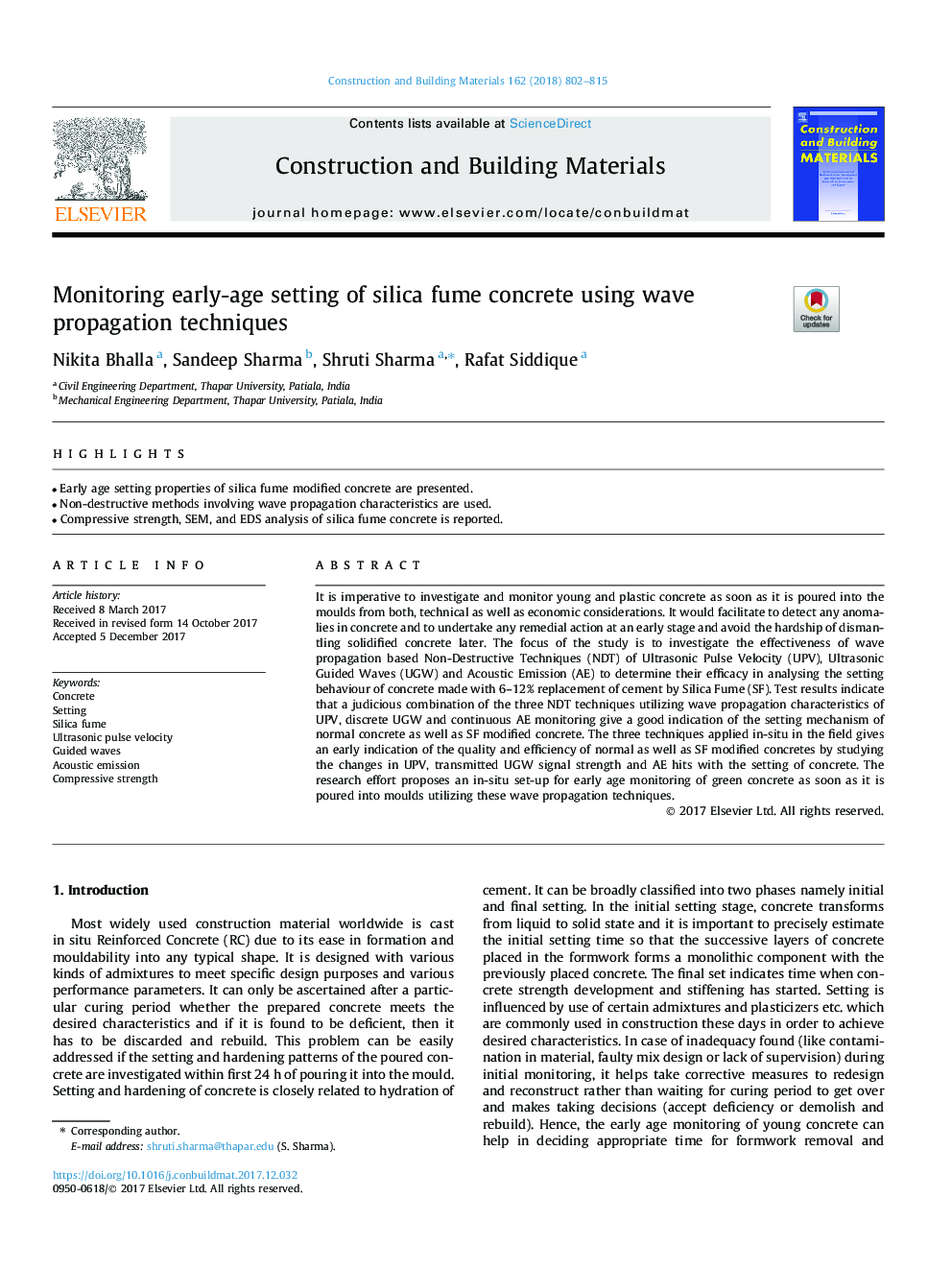| Article ID | Journal | Published Year | Pages | File Type |
|---|---|---|---|---|
| 6716646 | Construction and Building Materials | 2018 | 14 Pages |
Abstract
It is imperative to investigate and monitor young and plastic concrete as soon as it is poured into the moulds from both, technical as well as economic considerations. It would facilitate to detect any anomalies in concrete and to undertake any remedial action at an early stage and avoid the hardship of dismantling solidified concrete later. The focus of the study is to investigate the effectiveness of wave propagation based Non-Destructive Techniques (NDT) of Ultrasonic Pulse Velocity (UPV), Ultrasonic Guided Waves (UGW) and Acoustic Emission (AE) to determine their efficacy in analysing the setting behaviour of concrete made with 6-12% replacement of cement by Silica Fume (SF). Test results indicate that a judicious combination of the three NDT techniques utilizing wave propagation characteristics of UPV, discrete UGW and continuous AE monitoring give a good indication of the setting mechanism of normal concrete as well as SF modified concrete. The three techniques applied in-situ in the field gives an early indication of the quality and efficiency of normal as well as SF modified concretes by studying the changes in UPV, transmitted UGW signal strength and AE hits with the setting of concrete. The research effort proposes an in-situ set-up for early age monitoring of green concrete as soon as it is poured into moulds utilizing these wave propagation techniques.
Keywords
Related Topics
Physical Sciences and Engineering
Engineering
Civil and Structural Engineering
Authors
Nikita Bhalla, Sandeep Sharma, Shruti Sharma, Rafat Siddique,
